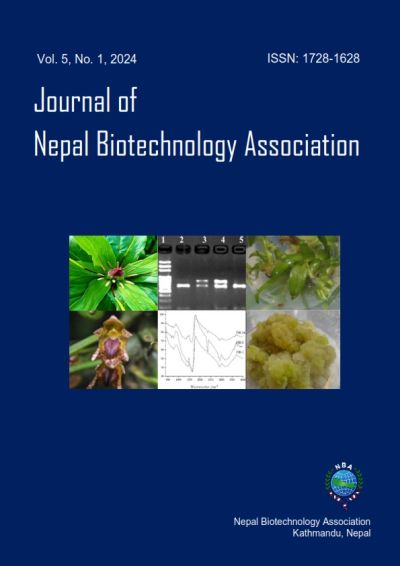Ex-situ Conservation of Bulbophyllum leopardinum, A Threatened Medicinal Orchid of Nepal
DOI:
https://doi.org/10.3126/jnba.v5i1.63739Keywords:
Bulbophyllum leopardinum, Micropropagation, PGRs, Seed germination, Shoot proliferationAbstract
A successful micropropagation method was developed via the in-vitro seed germination and seedling growth of the epiphytic and/or lithophytic orchid Bulbophyllum leopardinum, a species having horticultural and therapeutic significance. To enhance seed germination, several quantities and combinations of naphthalene acetic acid (NAA), 6-benzyl amino purine (BAP), indole acetic acid (IAA), gibberellic acid (GA3), and coconut water (CW) were added to 0.8% (w/v) agar-solidified MS medium. Half-strength MS medium has been experimented with alone and in combination with BAP, Kinetin (Kn), and GA3 to promote shoot development. In-vitro-developed healthy shoots were chosen to establish roots in a half-strength MS (HMS) medium supplemented with various auxins. The best and earliest seed germination with the greenest protocorms (96.3±0.5% in 7 weeks) was achieved on HMS medium fortified with 15% CW (H15C). Further tests for the shoot as well as root development were continued with an H15C medium. H15C with 1 mg/l BAP and 1.5 mg/l Kinetin was most effective for early in vitro development and differentiation into seedlings with the many long shoots (9.3±0.1 shoots and 2.4±0.1 cm per culture) within 12 weeks of sub-culture. The most suitable rooting hormone was 1 mg/l NAA (4.2±0.26 roots per culture). This medium also produced the longest roots (1.9±0.09 cm per culture). By successfully developing a protocol for the mass propagation of B. leopardinum, this research has enhanced both the cultivation and the commercialization potential of this species.




